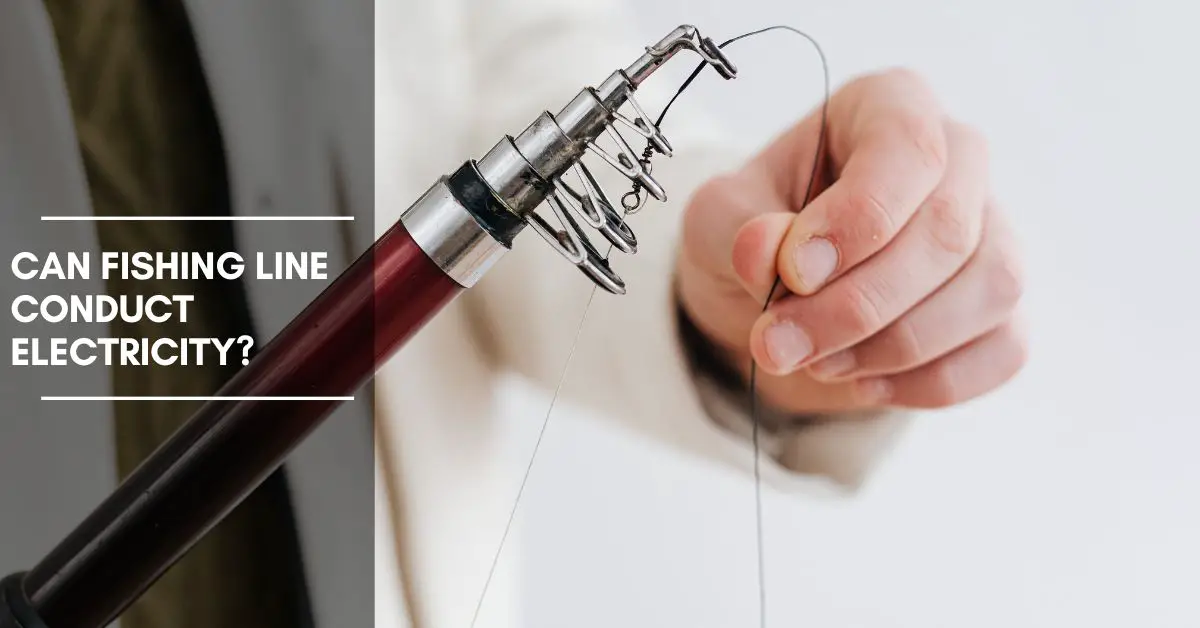As an avid angler, I’m always curious about the various aspects of my favorite pastime. One question that I’ve been pondering lately is whether or not fishing lines can conduct electricity.
In this article, we’ll dive deep into the world of fishing lines, exploring their materials, and conductivity properties, and busting some myths along the way. So, if you’re ready to reel in some fascinating facts, let’s get started.
To answer the burning question upfront: No, a typical fishing line cannot conduct electricity.
This is because most fishing lines are made from non-conductive materials such as nylon, fluorocarbon, or braided fibers. However, there are some exceptions to this rule, which we will discuss in more detail throughout the article.
Now that we’ve touched upon the answer, let’s not stop here. In the following sections, we’ll explore the science behind conductivity, the different types of fishing lines, and how they stack up against one another when it comes to electrical conductivity. So, if you’ve ever wondered if your fishing line can double as an impromptu electrical wire, you’ve come to the right place.
The Science of Conductivity
What Determines a Material’s Conductivity?
Conductivity is the measure of how easily a material allows electric current to pass through it. A good conductor, such as metal, has a high electrical conductivity, while an insulator, like nylon, has a low conductivity. The conductivity of a material largely depends on its atomic structure and the presence of free electrons.
Conductive and Non-Conductive Materials
Materials that are good conductors of electricity usually contain free electrons that can move freely between atoms. Metals like copper, silver, and gold are excellent conductors of electricity. On the other hand, non-conductive materials like rubber, plastic, and glass lack free electrons, making them poor conductors of electricity.
The Anatomy of a Fishing Line
The Role of Material in Fishing Lines
Fishing lines come in a variety of materials, each with its own unique set of properties that make them suitable for specific fishing applications. Some common materials used in fishing lines are nylon, fluorocarbon, and braided fibers. None of these materials are known for their electrical conductivity.
Nylon Fishing Lines
Nylon fishing lines, such as monofilament and copolymer lines, are popular for their low cost, ease of use, and versatility. They are made from a polymer called polyamide, which has low electrical conductivity. Therefore, nylon fishing lines do not conduct electricity.
Fluorocarbon Fishing Lines
Fluorocarbon lines are made from a compound called polyvinylidene fluoride (PVDF). They are known for their low visibility in the water, making them a favorite among anglers targeting wary fish. PVDF is a type of fluoropolymer, which is an excellent insulator and does not conduct electricity.
Braided Fishing Lines
Braided fishing lines consist of multiple strands of synthetic fibers woven together. These fibers, such as Dyneema or Spectra, are made from ultra-high-molecular-weight polyethylene (UHMWPE). UHMWPE is a type of thermoplastic, which is an insulating material, and as such, braided fishing lines do not conduct electricity.
The Exception: Metal Fishing Lines
There is, however, one type of fishing line that can conduct electricity: metal fishing lines. These lines, made from metals like stainless steel or titanium, are designed for specific purposes like deep-sea trolling or targeting toothy species. While not commonly used by most anglers, metal fishing lines can indeed conduct electricity due to their metallic composition.
In Conclusion
To sum up, the vast majority of fishing lines, including those made from nylon, fluorocarbon, and braided fibers, do not conduct electricity. This is because these materials are excellent insulators, lacking the free electrons necessary for electrical conduction.
However, there is an exception: metal fishing lines, which are made from conductive materials like stainless steel or titanium. While these lines are not typically used by most anglers, they are the only type of fishing line that can conduct electricity.
Now that you’re armed with this newfound knowledge, you can cast your line with confidence, knowing that it won’t double as an electrical conductor. So, whether you’re out on the water targeting trophy fish or simply enjoying a day of relaxation by the shore, you can reel in your catch without worrying about any unexpected electrical surprises.
Frequently Asked Questions
1. Can electricity go through nylon?
No, electricity cannot go through nylon. Nylon is an insulating material that does not conduct electricity due to its low electrical conductivity.
2. Is a fishing line a wire?
A fishing line is not a wire, as it is typically made from non-conductive materials like nylon, fluorocarbon, or braided fibers. However, metal fishing lines can conduct electricity, making them an exception.
3. What material conducts electricity the best?
Silver is the material that conducts electricity the best, followed by copper and gold. These metals have high electrical conductivity due to the presence of free electrons.
4. Is fishing line made of metal?
Most fishing lines are not made of metal. They are usually made from non-conductive materials like nylon, fluorocarbon, or braided fibers. However, there are some metal fishing lines made from stainless steel or titanium for specific fishing applications.
5. Can a braided fishing line conduct electricity?
No, a braided fishing line cannot conduct electricity. Braided fishing lines are made from synthetic fibers like Dyneema or Spectra, which are ultra-high-molecular-weight polyethylene (UHMWPE) materials that act as insulators and do not conduct electricity.

